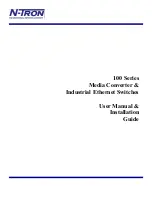
Page 6 of 21
Installation & Adjustment Procedures
Installation & Adjustment Procedures
Assembly
1. Preferred Switch Assembly Method
1.1.
If Disconnect switch is shipped assembled on insulators Skip Section 1 and Continue to
Section 2
.
1.2. Switches rated 72.5 KV and above are normally shipped assembled separately from their
insulators, with the live parts of each unit bolted to their own base. Installation consists of
removing the live parts from the base, mounting the base on the structure, the insulators to the
base, and the live parts to the insulators.
1.2.1. Alternately (and easier) each pole may be assembled on the ground and hoisted
to the structure as a complete unit.
CAUTION:
To prevent overturning during
assembly, the switch base must be bolted to a level, stable platform (e.g. metal
sawhorses).
CAUTION:
Lift fully assembled pole unit by the base only.
DO NOT
lift the pole unit by the live parts. Refer to
and
1.3. Before disassembling the live parts from the switch base you must match mark the insulator
bearing hub, switch arm, and rotating base to ensure correct reassembly (
).
Match-mark A to B and B to C. Failure to complete this step will make final adjustment more
difficult.
1.4.
OPEN THE SWITCH
and remove the switch live parts. Place them in a safe place to avoid
damage. (Vertical and underhung mounted switches should be opened only far enough to
relieve the contact pressure on the switch blade prior to removal of the live parts.)
1.5. Refer to the Unit Assembly and Field Assembly (SF) Drawings for bolt sizes. Mount the
insulators to the base adapters and the switch arm plate on the bearing. Confirm match marks
are aligned and properly torque the bolts (see
on page 3).
1.6. Confirm proper insulator alignment, the rotating insulator must be as near to perpendicular as
possible to both the long and short axis of the disconnect switch base.
NOTE:
The original
insulator stack height must be maintained. When the nuts on the jack bolts are used to adjust
insulator tilt, opposite nuts must be turned equally (run one nut up a certain number of turns,
turn the opposite nut down the same number of turns).
Figure 2: Match-Marked Components
A = Interpole Arm, B = Bearing Hub, C = Bearing Housing
















































